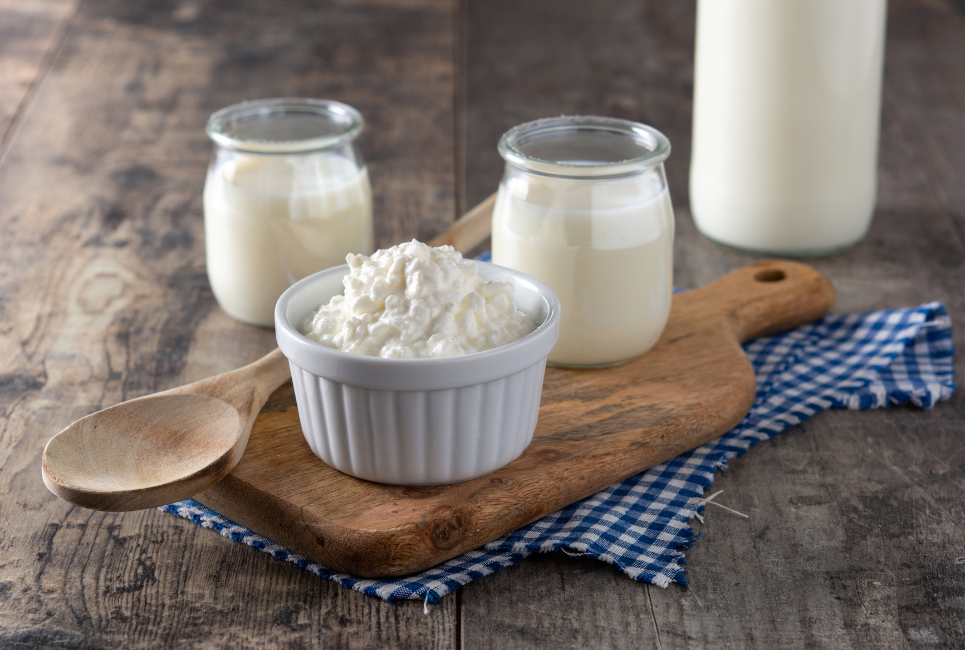If you’re a fan of probiotic-rich drinks, you’ve probably heard of Kefir. Kefir is a fermented dairy or non-dairy beverage packed with beneficial bacteria and yeasts.
And while there are many different ways to make Kefir, the two most popular formats are milk kefir and water kefir. So which one should you choose?
Here’s a look at the differences between milk kefir and water kefir, as well as some tips on choosing the right type for you.
Which Kefir is suitable for you? Milk or water is the question. Both milk and water kefirs have their own unique set of benefits and drawbacks.
So it can be tough to decide which one is best for you. In this blog post, we’ll explore the differences between milk and water kefirs so you can make the right choice for your needs. Stay tuned!
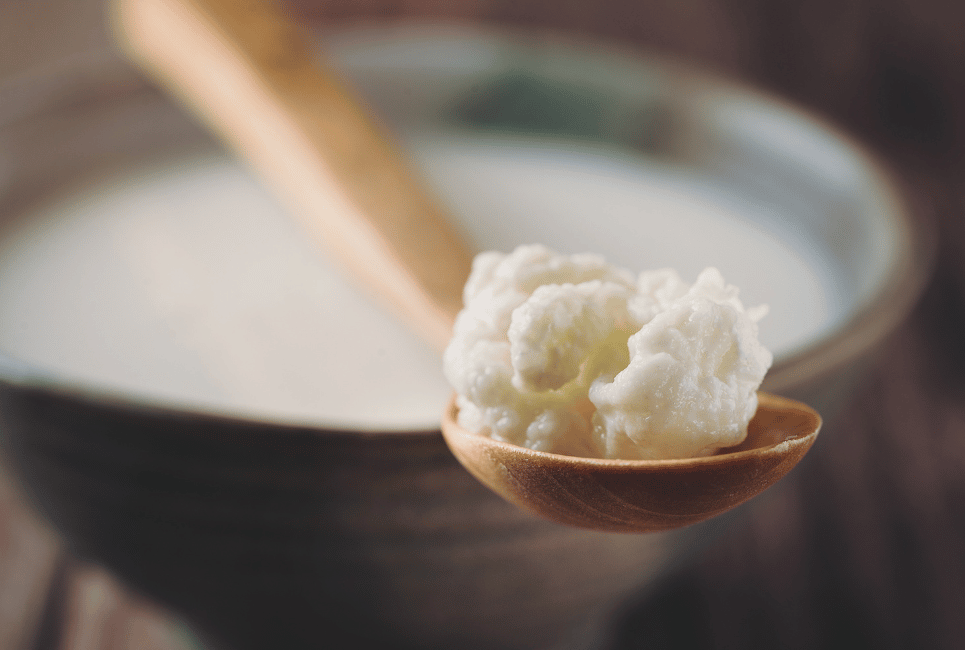
History of Kefir
The history of Kefir is somewhat disputed, but the generally accepted story is that it originated in the Caucasus Mountains between Russia and Iran.
Kefir grains are said to have been brought to these mountainous regions by shepherds who noticed that their goats and sheep were exceptionally healthy and energetic after grazing on the local wildflowers.
Some believe that Kefir was initially made from cow milk, but others claim that it was made from mare’s milk or even kumiss, a fermented drink made from horse milk.
In any case, it’s thought that the word “kefir” may have derived from the Turkish word “keif,” which means “good feeling.”
Kefir continued popular in the Caucasus Mountains and eventually made its way to other parts of Europe and Asia. In addition, it has become increasingly popular in the United States recently as people have become more interested in probiotic foods and drinks.
Benefits of Kefir
Kefir is a probiotic drink that can help with many different things.
It’s been linked to improving digestive health, reducing the risk of UTI in women and girls (and possibly boys), fighting off colds at daycare settings where kids spend most their time indoors playing games or watching TV on average 3-4 hours per day!
Kefirs also lowers inflammation, which means you’re less likely to be allergic to asthma attacks; plus, it may play an essential role against cancers such as breast cancer.
Milk Kefir
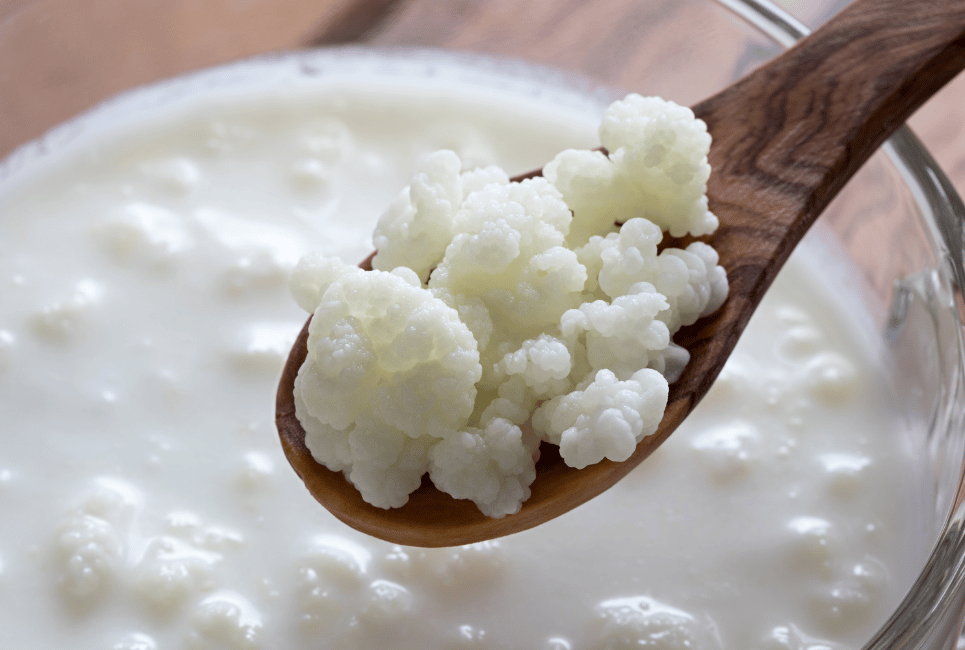
Milk Kefir doesn’t need added sugars because the starter culture ferments natural lactose in milk.
This means it has a bunch more vitamins and nutrients compared to water-kefirs including protein, calcium, phosphorus vitamin B12, riboflavin (vitamin BC), magnesium vItamin D fat-soluble vitamins (A, D, and K2)
Kefir made with milk also contains more probiotics than water kefir. And while all types of Kefir are beneficial for gut health, milk-based kefirs may be particularly helpful in restoring the balance of good bacteria in the gut after a course of antibiotics.
Milk kefir is an excellent choice if you’re looking for a probiotic-rich drink low in sugar. It can be enjoyed on its own or used in place of yogurt recipes.
Water kefir
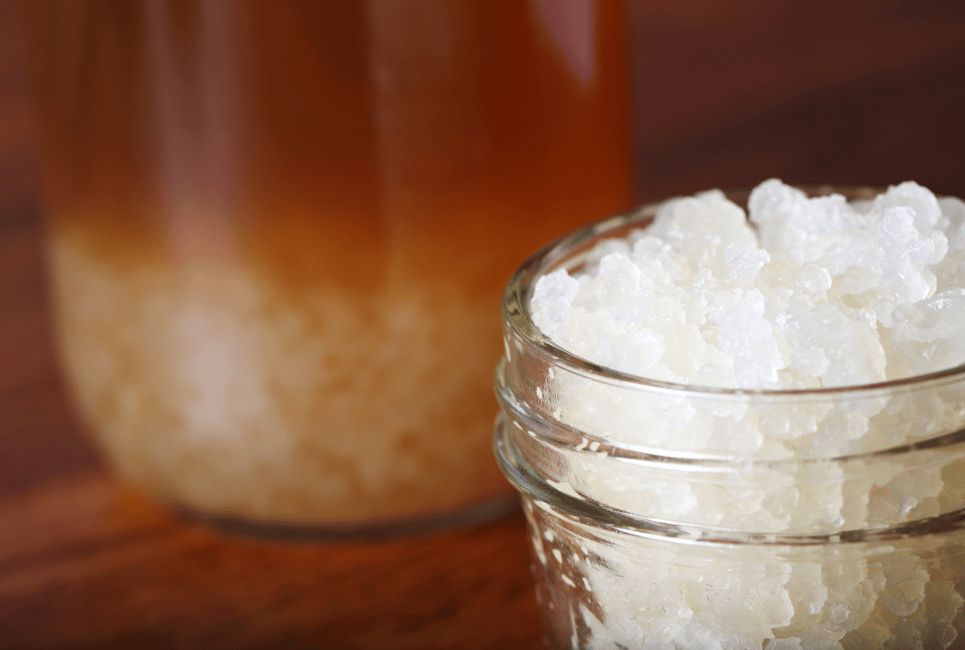
The best part about water kefir is that it’s completely dairy-free!
If you want a drink with fewer animal products or are vegan and allergic to milk proteins like Casein (a protein found in most commercial kinds of milk).
This might be perfect for your needs. It also means the fermentation process takes a much shorter time because there’s no need for Cultured Media, which can take up significant space if not used properly.
Water Kefir is an excellent source of probiotics, vitamins, and minerals. It contains high B-vitamins, including folic acid, biotin, and vitamin B12. These vitamins are essential for energy metabolism, nervous system function, and red blood cell production.
Water kefir is also a good source of minerals like calcium, phosphorus, and magnesium. These minerals are essential for bone health, muscle function, and nerve transmission.
How is Kefir Made?
How to make Milk Kefir?
Kefir is a healthy drink that has been around for centuries. It’s made from fermented milk and can be enjoyed with or without added sugar, depending on your preferences!
Milk kefir contains live active cultures, which help it taste better and provide many health benefits such as its inhabitants – probiotics (good bacteria).
To make the right milk Kefir, you’ll need some supplies:
- Cow’s milk plus either grains/starter culture.
- Coconut oil thinner-like substance found at room temperature under refrigeration.
- A wooden spoon for stirring.
- A non-reactive container (glass is best, but plastic will do in a pinch).
The process is simple: Heat milk to body temperature (around 100 degrees Fahrenheit), add your starter culture or grains, stir well, cover and allow to ferment at room temperature for 12-24 hours. After fermentation, strain the grains from the milk using a fine mesh strainer.
You can then add sugar, fruit, or other flavors to taste. Kefir is a refreshing and flavorful drink that’s perfect for any time of day!
How to make Water kefir?
Water Kefir is a healthy beverage with sugar water, fruit juice, or coconut milk.
You will also need to acquire and maintain the right starter culture for your desired production level- either through purchase as part of specialty foods like Probiotic Cultured dairy products at grocery stores nationwide.
Alternatively, one could opt instead to use regular old glass jarred cultures found commonly throughout most households’ kitchens (which may not necessarily contain live active cultures).
What does Kefir contain?
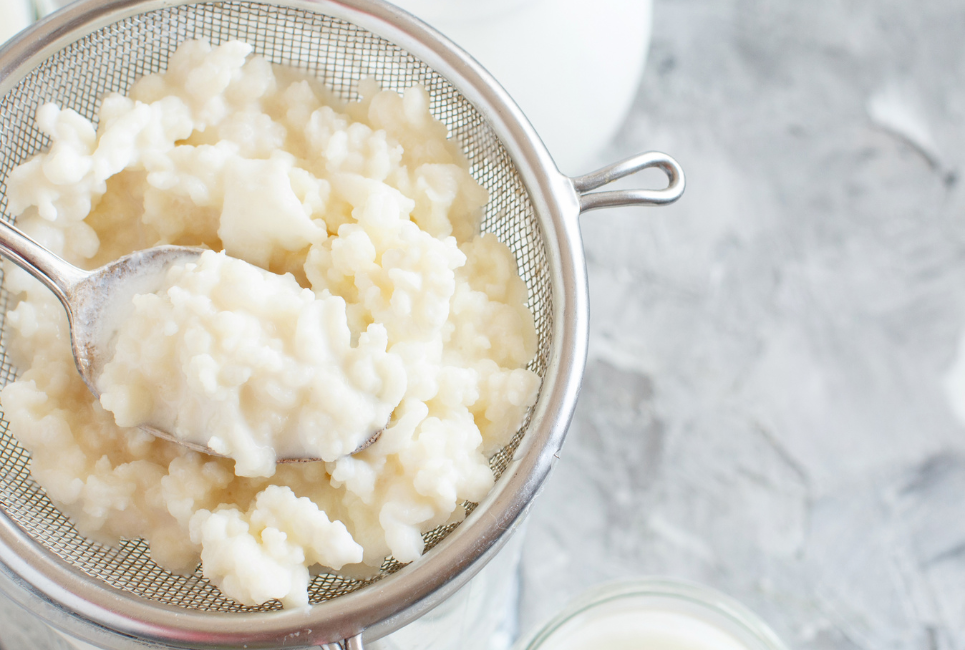
Milk Kefir
Milk Kefir Grains are an ancient starter culture used for centuries to make probiotic-rich beverages. Our milk kefir grains are propagated with organic ingredients, which means they’re healthier than store-bought dairy products!
Water kefir
Water kefir grains are a traditional reusable starter culture that makes dairy-free, live active bacteria and yeast. Our Water Kefirs start with organic sugar grown in filtered water before being tucked away for months so they can patiently ferment their goodies!
What are the Probiotics each Kefir has?
I love water kefir, but I’ve learned that it is different from milk-based beverages.
For one thing, you can’t make as wide varieties with just 10-15 strains of bacteria compared to the 50+ types found in homemade versions made from live grains or Easy Kefir grains (which are entirely possible!).
I typically enjoy drinking both kinds every day – depending on my mood! Sometimes if it’s hot outside more than anything else, then maybe something fermented will do me good.
Other times winter blues might get hold, so only certain ones come out, like kombucha, which also contains friendly microbes alongside our friend Lacto culturing them into deliciousness.
Milk Kefir
Kefir provides and enhances Lactobacillus acidophilus, L. Brevis, and other species which are found in various parts of the human gut. Still, only certain members have been shown to be beneficial for health, while others may cause disease or even death if ingested by humans.
Species such as Leucocricinosa uses calcium phosphate TO create lactic acids, which help prevent spoilage during storage due to its antibacterial activity against several Gram-positive bacteria.
However, this species is not related to the yogurt-producing bacterium L. bulgaricus or any other known health-benefiting members of its genus.
Water kefir
The most common probiotic species found in water kefir are Lactobacillus Brevis, casei, and hilgardii.
Other less commonly seen ones include Leuconostoc citreum (a type that produces vinegar). These bacteria can be used to make beer, while Acetobacillus and Bifidobacterium are two other types that are used in the food industry.
How is Kefir flavored?
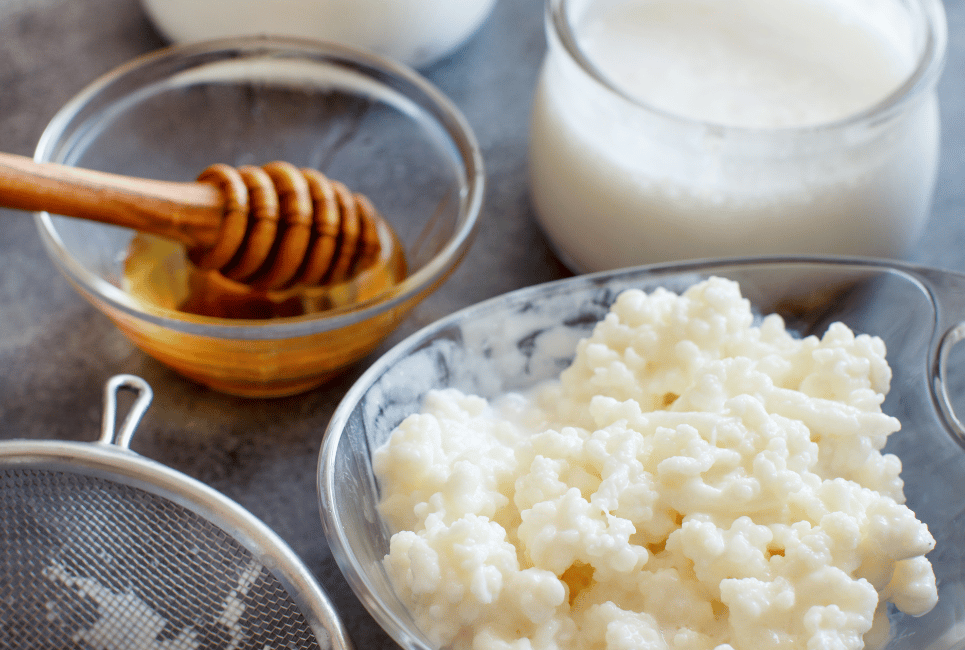
Milk Kefir
Milk Kefir has a probiotic effect on the gut, providing health benefits to those who drink it. It’s also delicious! You can add fruit or frozen items to the fresh milk for added flavor, depending upon your taste preferences.
Some people like their kefirs extra sweet, so they may also use honey, while others prefer maple syrup instead of sugar which would be perfect.
If you’re looking into giving this beverage up but are not quite ready yet because we all know how much better things feel when no artificial ingredients are involved, right?
Water kefir
Try using different fresh fruit and flavors to make your water kefir more interesting! For example, you can add extracts for extra taste or lemon juice if you want something tangy.
How does each Kefir taste?
Milk Kefir
Milk kefir is fermented milk that’s derived from rennet-free cows’ dairy. So, unlike traditional types of cheese, it doesn’t contain any lactose and has very little sugar or calories in comparison!
The taste varies depending on how long you let your culture grow: shorter ferments yield more potent acids while longer ones produce softer flavors with more sweetness.
Although some find this latter variety too vinegary for their tastes, it is recommended to try out both approaches before deciding which suits them best.
The consistency can also change drastically during different stages; sometimes, they’re fluffy enough to drink straight off the spoon (unless dipped); other times, they resemble a thick liquid yogurt.
Water kefir
Water Kefir has a sweet and slightly fermented flavor that’s hard to resist. However, most prefer flavored waters kefir with fruit orchards for maximum impact!
Most say that water Kefir tastes like lemonade, with a mildly sweet and slightly tart flavor.
However, since it’s made with live probiotic cultures, it can also have a tangy taste depending on how long it’s been fermenting.
Overall, water Kefir is refreshing and light, making it an excellent choice for summertime or anytime you want a healthy, hydrating drink.
How is each Kefir used?

Milk Kefir
Milk kefir grains are great for various things, from starter culture to fermented vegetables. You can even use them as an additional source of milk in your diary!
Fermenting vegetables with extra milk kefir grains is a great way to preserve them naturally, and it can also help you make your sauerkraut in just one day!
Kefir drink is sour and carbonated and is often used as a base for soups or yogurt substitutes. However, Kefir can also be consumed on its own, and many people find it to be a refreshing and healthy beverage.
Water kefir
Water Kefir is a versatile fermented beverage that has many uses. It can be added to non-dairy milk, such as soy or almond milk, to make Kefir (use ¼ cup of water with 2 cups of your favorite fruit juice).
You could also use it as extra starter culture when beginning vegetables for fermentation; add 1tablespoon into each jar before placing it onto the feeder layer, which will then provide beneficial bacteria needed during the fermentation process.
Water Kefir can also be enjoyed as a refreshing and health-promoting drink.
Mix 1 part water kefir with 3-4parts fruit juice or soda water for a delicious and effervescent beverage. Water Kefir will last indefinitely in the refrigerator; however, the flavor will become tarter over time.
Kefir Starter vs Kefir Grains
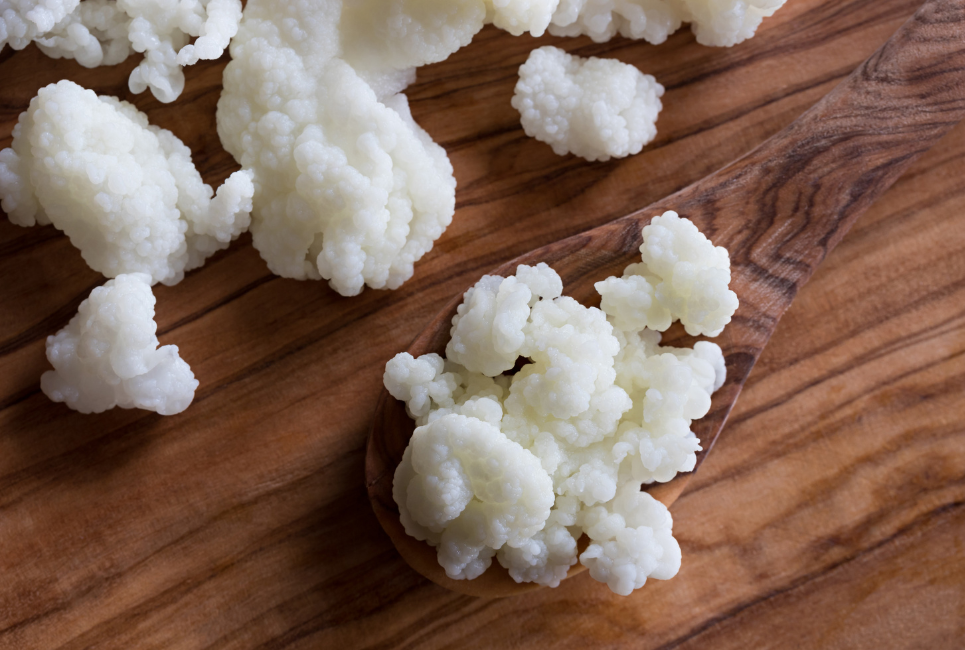
The instructions on the package are clear, but it’s always best to use live grains for making Kefir. Why? It may be hard to tell without knowing what kind of milk you’re using or how long ago they fermented their last batch–if at all!
Live Kefirs also produce more gas than dried-out bowls do, so there will probably never be an extra bowl again once this one has been used up because everything goes into your mouth during consumption instead.
Factors affecting the verdict
Some important points about water kefir grains that you need to know. One of them is how Kefir can be used as a vegan or dairy-free option for those who do not consume animal products at all:
“Water Kefir Grains can multiply quickly compared with milk-kefir knocks because they’re less complicated in maintenance and preparation; however, there is an increased risk when handling these cultures due to their appearance looking similar.
“This leads me to my next point, which says, “the fizzing soda taste may appeal to children more than bottled soft drinks.” It is an excellent alternative to dairy products for those who are vegan, have lactose intolerance, or seek fermented food for gut health.
Milk Kefir is a great way to get all these health benefits with added flavor! It contains higher levels of minerals and probiotics than milk, plus it can be made using coconut, which has fantastic antifungal properties.
I recently started drinking this myself because my candida was out of control–I had no idea how bad things were until they improved after switching over from almond or hemp yogurt (ways better!). Plus, you don’t need any sweeteners, so even those sugar cravings won’t bother me anymore 🙂
Final Thoughts
So, what’s the verdict? Is milk kefir or water kefir better for you?
The answer is…it depends. Both have unique benefits and drawbacks, so it ultimately comes down to what you’re looking for in a probiotic drink and your individual dietary needs.
If you want all the benefits Kefir offers, try drinking both kinds and see which one you like best. And if you still can’t decide, don’t worry – either way, you’re getting a healthy dose of probiotics that will keep your gut happy and healthy.
If you’re still on the fence about whether or not to try Kefir, hopefully, this article has helped tip the scale in favor of giving it a go.
Kefir is a delicious and nutritious drink that can offer many health benefits, and it’s easy to make at home with just a few ingredients. So what are you waiting for? Get brewing!

